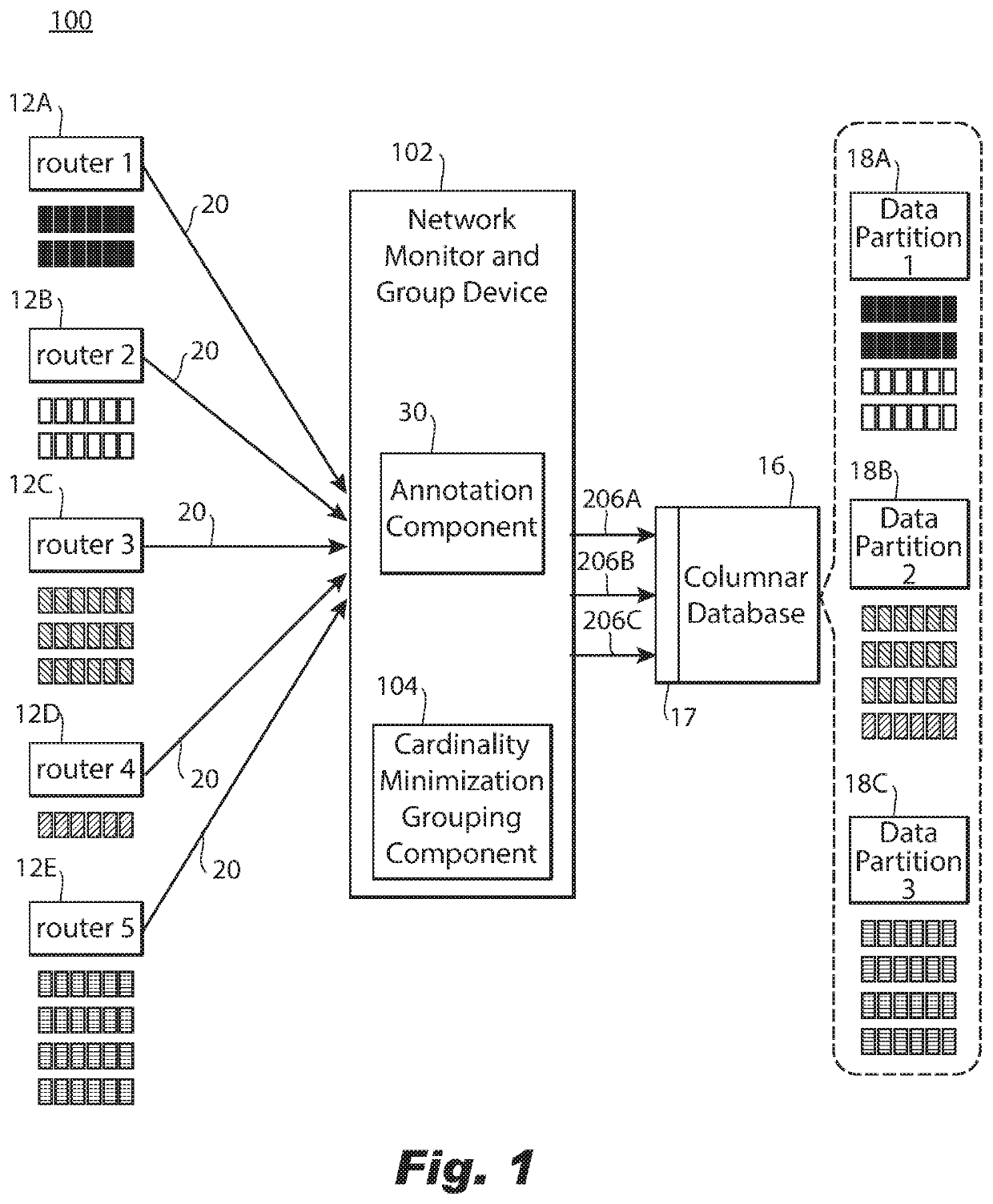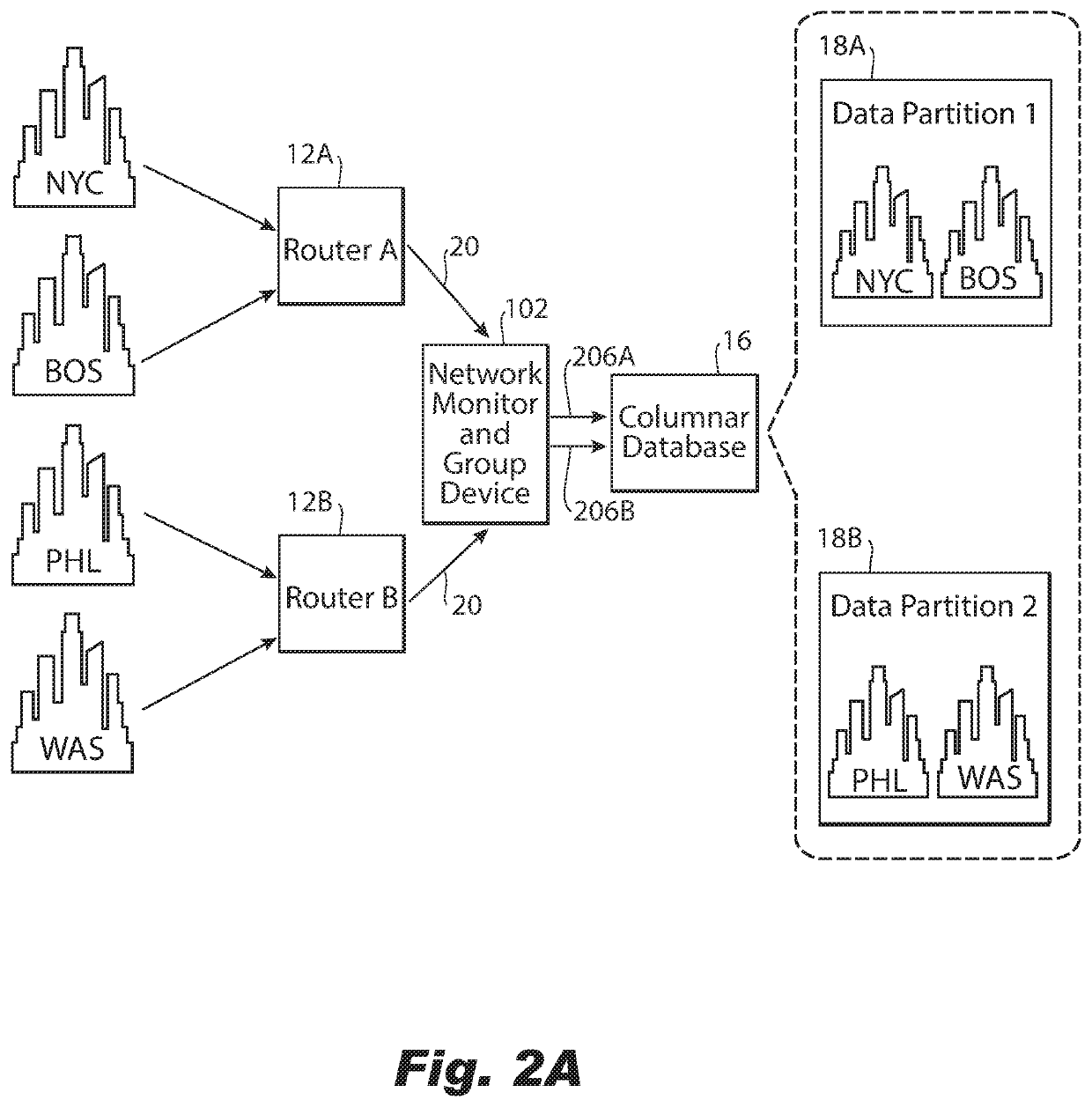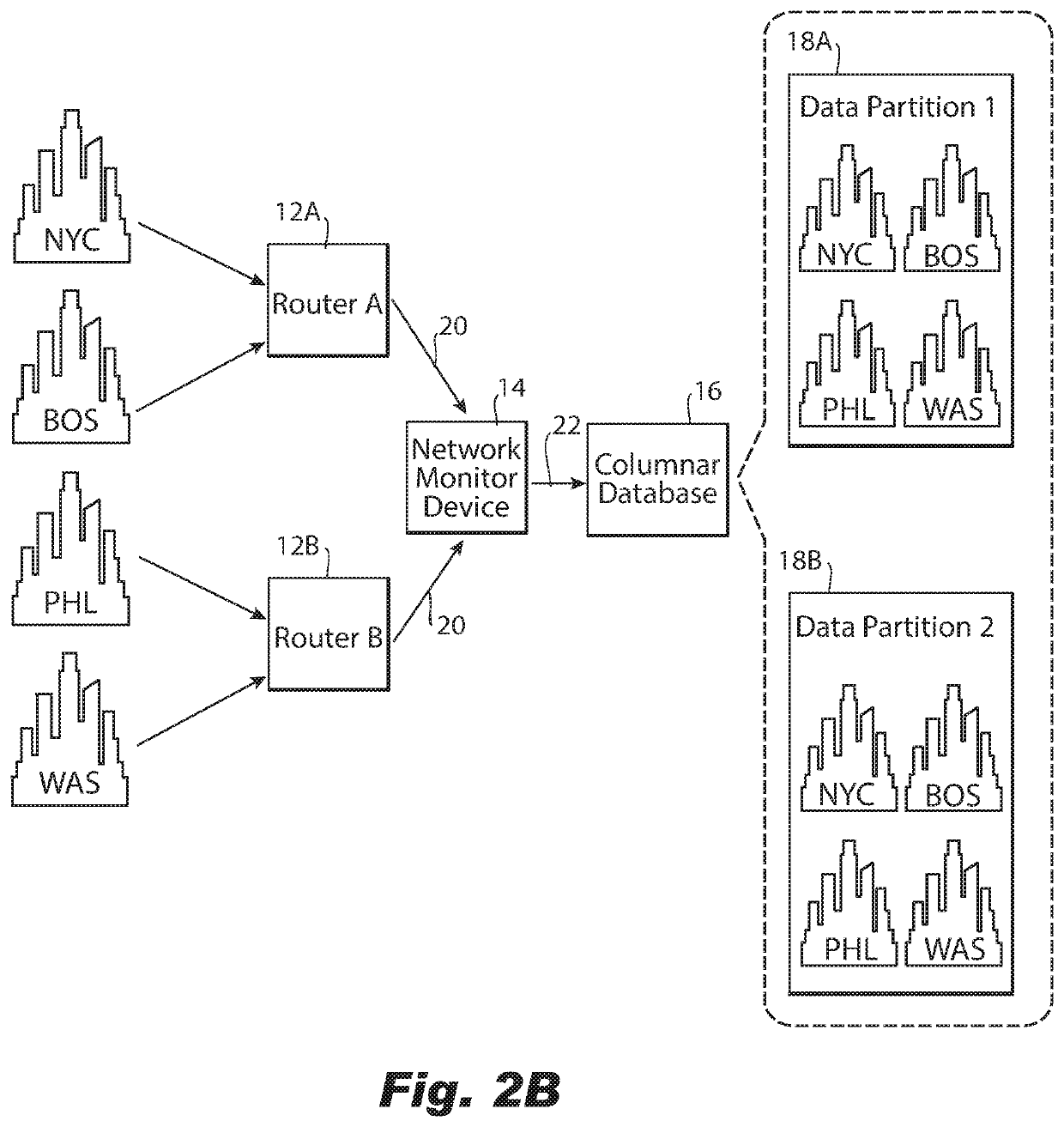Grouping network traffic prior to storage in a columnar database
a network traffic and columnar database technology, applied in the field of network traffic analysis, can solve problems such as inefficiency in responding to queries and analyzing
- Summary
- Abstract
- Description
- Claims
- Application Information
AI Technical Summary
Benefits of technology
Problems solved by technology
Method used
Image
Examples
examples
[0046]Partitioning on Dimension A[0047]Values for dimension A are [a, b, c][0048]Given A=a, dimension B has 6 possible values[0049]Given A=b, dimension B has 4 possible values[0050]Given A=c, dimension B has 2 possible values[0051]Given two partitions, the result would be one partition for dimension A (having six values) and one partition for dimensions B and C combined, having (4+2=6 values).
[0052]This could be extended to another example as follows:
[0053]Partitioning on Dimension A[0054]Values for dimension A are [a, b, c][0055]Given A=a, dimension B has 6 possible values, dimension C has 2 possible values[0056]Given A=b, dimension B has 4 possible values, dimension C has 1 possible value[0057]Given A=c, dimension B has 2 possible values, dimension C has 1 possible value[0058]The criterion is f(a) which is some function of 6 and 2. An example of a simple function is “sum,” which would result in the result 8.
[0059]The distribution of the network traffic metadata into the groups can...
example a
[0083]Input: Routers R include routers A, B, and C having the respective C's: [200, 300, 500]
N=5
[0084]At block 404 IW is determined using Equation (1). Total C for all R=200+300+2*(250)=1000
IW=1000 / 5=200
[0085]Iteration 1: After a first iteration of blocks 406 and 408:
[0086]Router A has chunk 200, router B has chunk 300, and router C has chunks 250, 250.
[0087]Iteration 2: After a second iteration of blocks 406 and 408:
[0088]Router A has chunk 200, router B has chunks 150, 150, and router C has chunks 250, 250, at which point there are N chunks, and the method continues at block 602. This can be written in the following notation: R=[A:200; B:150, 150; C:250, 250].
example b
[0089]Input: Routers R include routers A-G having the respective C′s: [A:800; B:200; C:200; D:100, E:100; F:50; G:50]
N=4
[0090]At block 404 IW is determined using Equation (1). Total C for all R=[800+200+200+100+100+50+50]=1500
IW=1500 / 4=375
[0091]Iteration 1: After a first iteration of block 406 and 408:
[0092]R=[A:400, 400; B:200; C:200; D:100, E:100; F:50; G:50], totaling eight chunks.
[0093]Since there are already a total of at least four chunks in the routers R, there is no need for a second Iteration 2.
[0094]With reference to FIG. 5, a method performed by the monitor device to assign the chunks to particular groups is described. Each group will then be delivered to an assigned respective data partition of the columnar database. At block 502, R is sorted in descending order as a function of C for each router r divided by the number of chunks for r. At block 504, a determination is made whether there are more routers to process. If it is determined at block 504 that there are no more...
PUM
 Login to View More
Login to View More Abstract
Description
Claims
Application Information
 Login to View More
Login to View More - R&D
- Intellectual Property
- Life Sciences
- Materials
- Tech Scout
- Unparalleled Data Quality
- Higher Quality Content
- 60% Fewer Hallucinations
Browse by: Latest US Patents, China's latest patents, Technical Efficacy Thesaurus, Application Domain, Technology Topic, Popular Technical Reports.
© 2025 PatSnap. All rights reserved.Legal|Privacy policy|Modern Slavery Act Transparency Statement|Sitemap|About US| Contact US: help@patsnap.com



